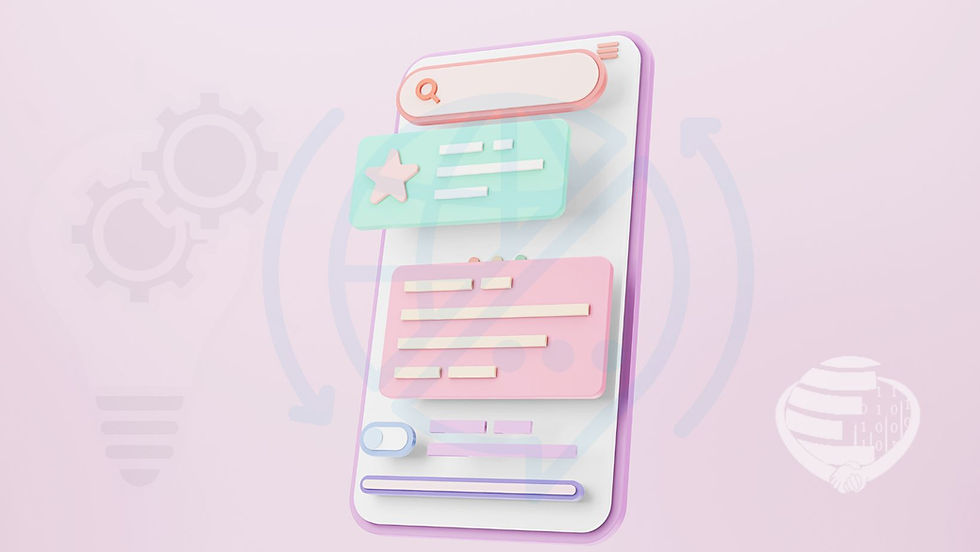The Importance of Localization for Applications
- Admin
- May 1, 2023
- 3 min read
In today's globalized world, businesses are striving to reach customers in different countries and cultures. One of the key components of this effort is the localization of applications, which allows companies to adapt their software to meet the specific needs and preferences of their target audience.
Localization is the process of adapting software or other products to meet the language, cultural, and other specific requirements of a particular country or region. It goes beyond mere translation and includes cultural nuances, idioms, date formats, and other aspects that are unique to a particular locale. Localization ensures that the application is not only translated accurately but also adapted to the cultural and linguistic nuances of the target market.

Localization of applications is an essential step in expanding the reach of your software to international markets. It can help you create a more personalized user experience for your customers, which in turn can lead to higher adoption rates and customer loyalty. By adapting your software to the cultural preferences and expectations of your target audience, you can create a user interface that feels familiar and intuitive to them.
Localization of applications can also help businesses comply with local regulations, such as data privacy laws and accessibility guidelines. This is particularly important in industries such as healthcare and finance, where data security and compliance are critical.
Partnering with a professional Language Service Provider (LSP) is key to achieving successful localization of your application. A professional LSP has a team of experienced linguists, project managers, and engineers who understand the nuances of language and culture and can help you navigate the complexities of the localization process.
The localization process begins with a thorough analysis of your software and its requirements. This includes identifying the target audience, understanding the cultural and linguistic nuances, and determining any regulatory requirements. The LSP team then works with you to develop a customized localization plan that includes a timeline, budget, and workflow.
The next step is the actual translation and adaptation of your software to the target market. This includes not only translating the user interface but also adapting other components such as help files, user manuals, and marketing materials. The LSP team then conducts rigorous testing to ensure that the localized software is fully functional and meets the requirements of the target audience.
The Importance of CAT Tools in App Localization
Computer-Assisted Translation (CAT) tools are essential for localization of apps as they streamline the translation process and improve the quality of the translations. CAT tools are designed to support the work of translators, enabling them to work faster, more accurately, and more consistently.
The localization of apps involves the translation of not only the user interface but also other components such as help files, user manuals, and marketing materials. This can be a time-consuming and complex process, especially when dealing with large applications with thousands of words. However, CAT tools can help simplify the process by providing a central platform for managing translations and ensuring consistency across all components.
One of the primary benefits of CAT tools is translation memory. Translation memory is a database of previously translated content that can be reused in future translations. This means that if a translator has previously translated a sentence or phrase, the CAT tool can automatically suggest the translation, saving time and improving consistency. This is particularly useful in the localization of apps, where there are often repeated phrases and terminology.
CAT tools also provide terminology management, which ensures consistency in the translation of key terms and phrases. Terminology management allows translators to create and manage glossaries, which are lists of terms and their translations. This helps ensure that key terms are translated consistently across all components of the app.
Another benefit of CAT tools is the ability to work collaboratively. In app localization projects, there are often multiple translators working on different components of the app. CAT tools allow all translators to work on the same platform, ensuring that everyone is working from the same translation memory and terminology management system. This promotes consistency and accuracy in the translations.
CAT tools also provide quality assurance features, such as spell checkers, grammar checkers, and formatting checks. These features help ensure that the translations are error-free and adhere to the style and formatting guidelines of the app.
Localization of applications is an essential component of expanding your software's reach to international markets. By partnering with a professional LSP, you can ensure that your software is accurately translated and adapted to meet the cultural, linguistic, and regulatory requirements of the target market. With expert localization services, you can create a more personalized user experience, increase adoption rates, and build customer loyalty.
Related posts:




Comments